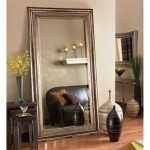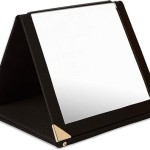History of Glass Mirrors: An Enduring Reflection
Mirrors, ubiquitous in our daily lives, have a captivating history that spans millennia. From their humble beginnings to their modern-day sophistication, glass mirrors have played a multifaceted role in human society, reflecting our vanity, facilitating communication, and serving practical purposes.
Ancient Origins
The earliest known mirrors date back to the Neolithic era, around 6000 BCE. These mirrors were made from polished obsidian, a volcanic glass with a reflective surface. In ancient Egypt, mirrors were made from polished copper or bronze, and were often adorned with intricate designs. Mirrors were also prevalent in ancient Greece and Rome, where they were used for both cosmetic and religious purposes.
The Venetian Revolution
The development of glass mirrors as we know them today can be attributed to Venice in the 13th century. Venetian glassmakers developed techniques for producing flat, clear glass, and by the 16th century, Venice had become the leading producer of mirrors in Europe. Venetian mirrors were highly prized for their clarity and durability, and were often adorned with elaborate frames and embellishments.
Mirrors in the Modern World
In the 19th century, the invention of the silver-backed mirror revolutionized mirror production. This technique involved coating the back of a glass sheet with a thin layer of silver, resulting in a highly reflective surface that was more durable and affordable than previous methods. Mirrors became increasingly common in homes and public spaces, and their use expanded beyond personal grooming to include decorative and architectural elements.
Contemporary Applications
Today, glass mirrors continue to evolve, finding applications in various fields. They are used in scientific equipment, such as telescopes and microscopes, to magnify images and facilitate research. In architecture, mirrors are employed to create illusions of space, reflect natural light, and enhance the aesthetic appeal of buildings. They are also essential components of smartphones, tablets, and other electronic devices, enabling video calls and selfie-taking.
A Reflection of Society
Throughout history, mirrors have reflected not only our physical appearance but also the societal norms and values of different eras. In ancient Egypt, mirrors were associated with the cult of the goddess Hathor, who was believed to represent beauty and fertility. In the Middle Ages, mirrors were often used as symbols of vanity and temptation. In the Victorian era, mirrors were frequently placed in elaborate frames, reflecting the prevailing emphasis on wealth and status.
Today, mirrors continue to play a significant role in our lives, both practical and symbolic. They are essential for tasks such as grooming, but they also serve as decorative elements, enhancing the ambiance of our homes and public spaces. Mirrors offer us a glimpse into ourselves, allowing us to reflect on our appearance, our thoughts, and our place in the world.

The History Of Mirror Through A Glass Darkly Bienenstock Furniture Library

The Rise Of Mirror As Commonplace

The History Of Mirror Through A Glass Darkly Bienenstock Furniture Library

Mirror History Invention Of The Mirrors And Its Origins

The History Of Mirror And Its Evolving Style Through Ages

The Mirror History And Its Evolving Style

History Of The Mirrors Paris

The History Of Mirror Through A Glass Darkly Bienenstock Furniture Library

When And Where Was The First Mirror Invented Ancient Mirrors

The History Behind Venetian Mirrors Murano Glass Vintage








